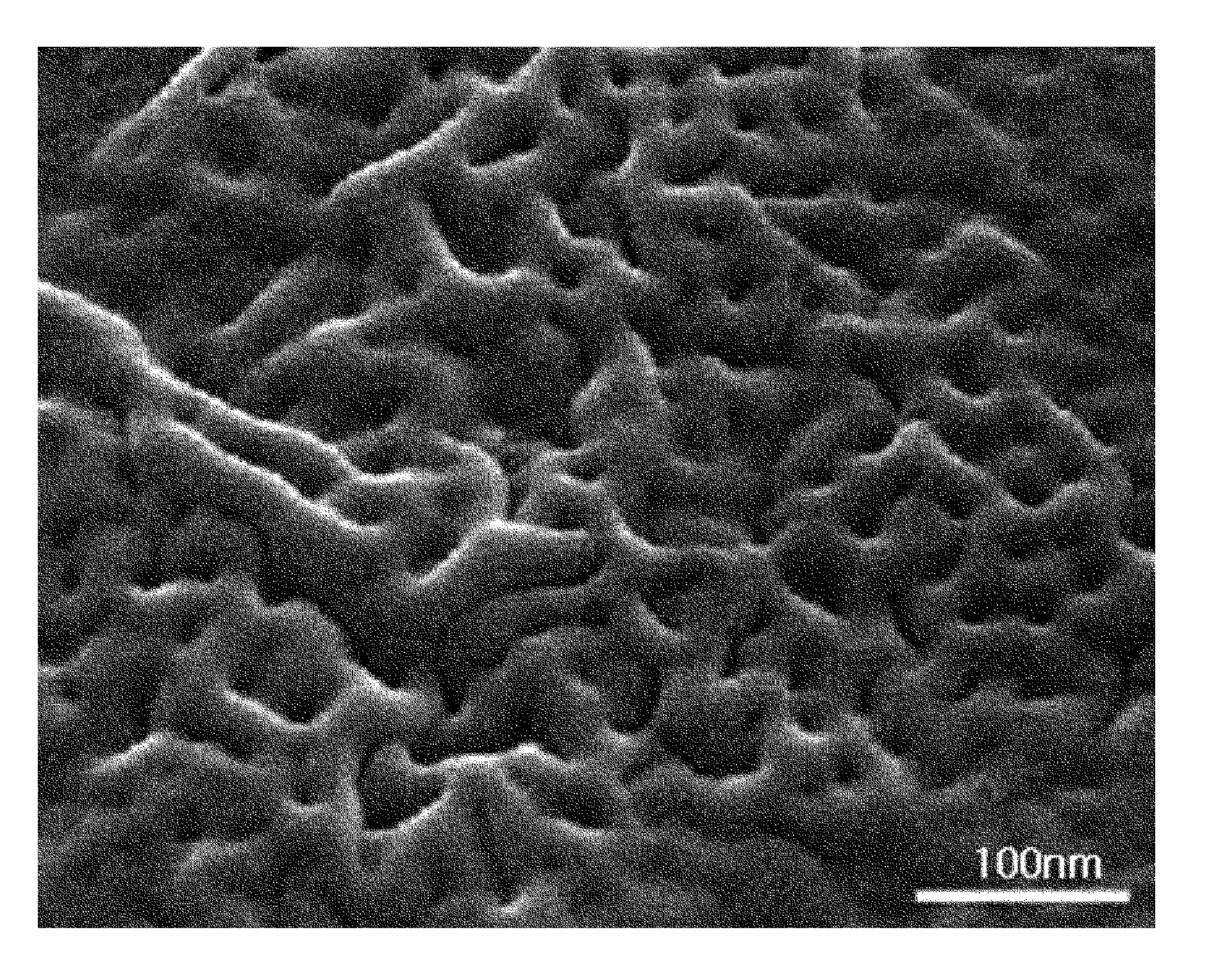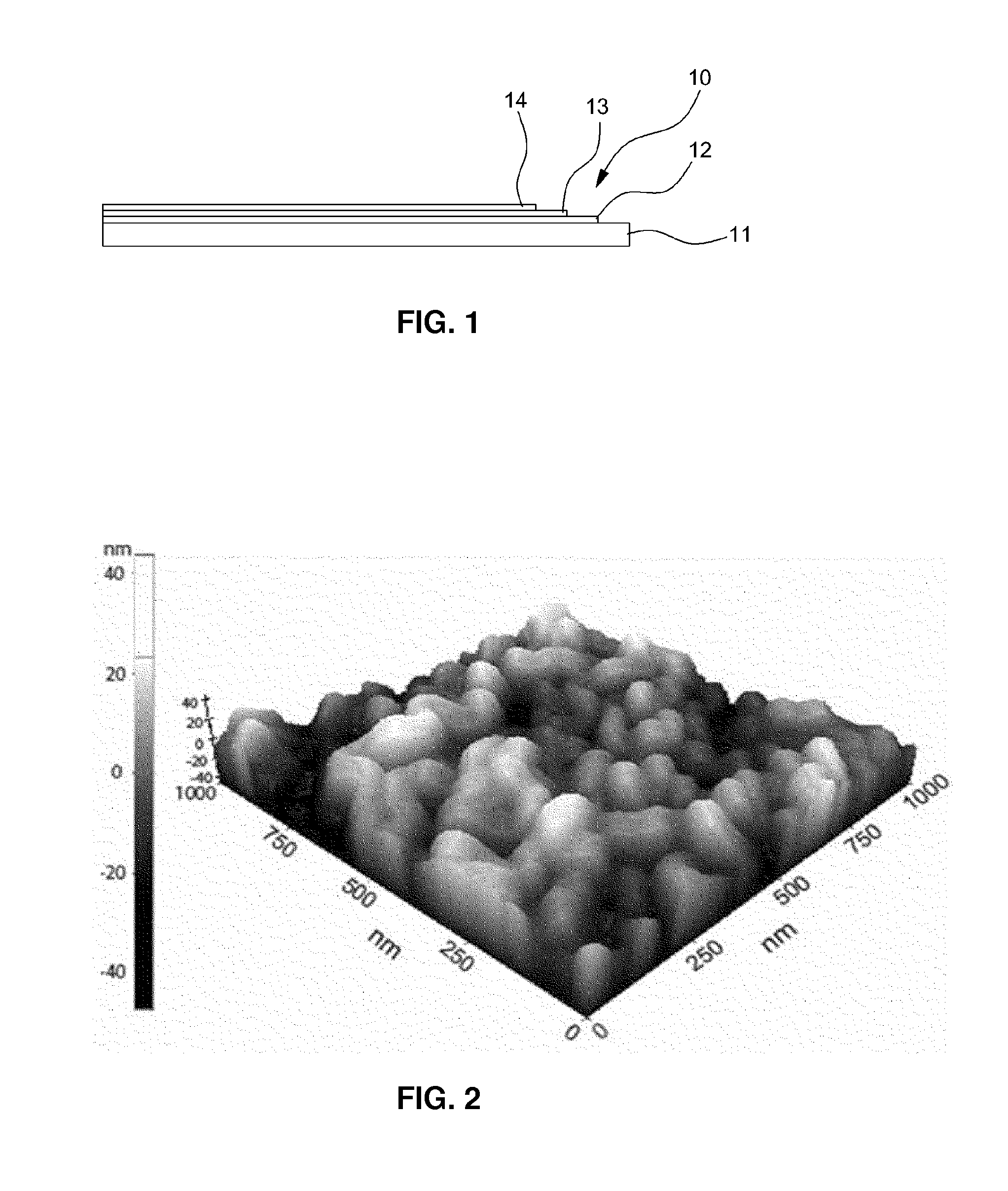Method for manufacturing flexible organic thin film solar cell by ion beam treatment and solar cell manufactured by the same
a solar cell and organic technology, applied in the field of solar cells, can solve the problems of reducing energy conversion efficiency, complicated manufacturing process, and affecting the efficiency of solar cells, and achieve the effect of reducing manufacturing costs and high cos
- Summary
- Abstract
- Description
- Claims
- Application Information
AI Technical Summary
Benefits of technology
Problems solved by technology
Method used
Image
Examples
example
[0070]In this Example of the present invention, a transparent polyethylene terephthalate (PET) film (manufactured by SKC) was used as a flexible plastic film substrate, and the PET film was suitably fixed to an ion beam irradiating apparatus such that the ion beam was incident perpendicular to the surface of the film. Further, argon (Ar+) ion beam treatment was suitably performed to form a nanopattern on the PET film having a smooth surface. Here, the Ar+ ion beam treatment was suitably performed under the conditions that the voltage between a cathode and an anode of an ion gun was 1,000 eV for 30 minutes. Preferably, the degree of vacuum in a vacuum chamber was less than 0.01 mTorr. According to certain preferred embodiments and as shown in FIGS. 2 and 3, for example, FIGS. 2 and 3 are an atomic force microscope (AFM) image and a scanning electron microscope (SEM) image showing the nanopattern having a concavo-convex structure formed on the surface of the film in the above manner. ...
PUM
| Property | Measurement | Unit |
|---|---|---|
| time | aaaaa | aaaaa |
| temperature | aaaaa | aaaaa |
| incidence angle | aaaaa | aaaaa |
Abstract
Description
Claims
Application Information
 Login to View More
Login to View More - R&D
- Intellectual Property
- Life Sciences
- Materials
- Tech Scout
- Unparalleled Data Quality
- Higher Quality Content
- 60% Fewer Hallucinations
Browse by: Latest US Patents, China's latest patents, Technical Efficacy Thesaurus, Application Domain, Technology Topic, Popular Technical Reports.
© 2025 PatSnap. All rights reserved.Legal|Privacy policy|Modern Slavery Act Transparency Statement|Sitemap|About US| Contact US: help@patsnap.com



